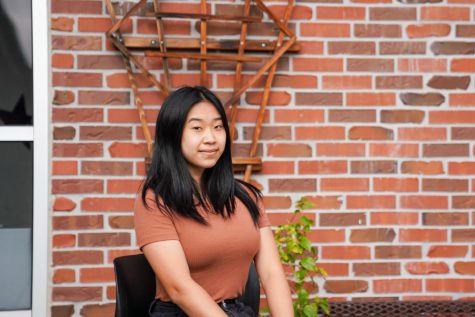The dichotomy of social media activism
Comparing active versus passive forms of activism on social media platforms
September 24, 2020
Summer 2020, here in the MVHS community and beyond, was like no other. Not only was a worsening global pandemic a key player, but so was the resurgence of the Black Lives Matter movement across our community, the nation and even the world. And this movement seemed to influence the expansion of another one, particularly among teenagers — social media activism.
Over the summer, former President Barack Obama said that “watching the heightened activism of young people in recent weeks, of every race and every station, makes me hopeful,” commending our generation’s response to BLM and our desire to create real change.
And this activism is evident on social media platforms, where posts span from political or informational infographics to ones that promote petitions for change to underreported media coverage. Yet this phenomenon, like other social phenomena, has two sides: it demonstrates both hopeful activity as well as disappointing passivity.
Active Activism
With the increase in people’s social media use and social justice awareness in recent months due to shelter-in-place orders and the death of George Floyd, using platforms to share information about important issues has become far more common. A simple click can share articles and posts packed with details about people, events and other avenues of action to the public. The ability to instantly redirect followers to a post allows for a far more rapid spread of information as opposed to traditional avenues.
The fundamental workings of social media allows anybody to open up the app and see material specifically curated for them, whether it is through the Instagram For You or Explore pages. As people click through stories, eye-catching material gets more views. And with these views, likes and comments, a post gains more popularity, spreading its content across the platform. For example, students have been sharing posts and their own opinions on their social media accounts about the current events, including hashtags like #BlackLivesMatter, #Beirut and #COVID-19. This is a relatively easy way to start conversation, amplify unheard voices and expand upon impactful movements.

People are driven to interact with posts that they can quickly understand and digest. Rather than spending a lot of time looking through news articles, glancing over a couple of trending hashtags and the top posts of the week can give people a general idea of current events. Lengthy articles about serious matters are difficult to get through, especially considering younger audiences that flood social media; hence, these hashtags and posts can be good starting points for awareness. With the use of infographics, information that would have been skipped over can be transformed into visually appealing and concise posts.
As a result, social media acts as a tool for influential figures to easily spread their messages and reach their own audience. By posting on their accounts directly, influencers allow fans to learn more about their stance and take note of their messages. For example, singer Ariana Grande posted on her social media platforms about COVID-19 safety, providing links to donate to nonprofit organizations. And through her collaboration with Justin Bieber on the single “Stuck with U,” the net proceeds funded grants and scholarships for the first responders’ children. Grande aided the efforts by using her platforms to spread awareness and raise money for a cause that she supported.
To take it a step further, reposts make a bigger impact when people actually follow up in a substantial way. Attending the promoted events, actually signing the petitions and taking time out of your day to educate yourself are some of the ways these social media posts can go beyond just a thought or a mindless share.
Social media can be an incentive for change, and through social media activism, many are using it as such, by using their power to inspire and act towards a better, more just future.
Passive Activism
Social media activism, without the right intent, can quickly spiral into an arena for performance and guilt-erasure rather than meaningful action. Sometimes, it is well-meaning people who blindly trust Instagram infographics that spew misinformation. Other times, it is people who need to check activism off their to-do list, as if complex social problems can be solved by a mere repost. And often, it is a little bit of both.
Today, for those privileged enough to have access to media, staying informed is relatively easy. Therefore, staying updated has become, frankly, a choice. There’s free publications and email newsletters like theSkimm or The New York Times’ The Morning, and simply turning on notifications on the Apple News iPhone app will curate and notify you about articles from multiple professional publications. And perhaps the easiest of all — checking social media.
It is easy to follow news publications and receive accurate information, but it’s also easy to stumble across a random text post on your For You page and immediately repost it with little to no regard for its factuality. For instance, research reported in the journal Psychological Science “[finds] that people tend to share false information about COVID-19 on social media because they simply fail to think about accuracy when making decisions about what to share with others.” Apparently, seeming “woke” is more important than facts (and don’t forget, you receive bonus points if the post reaffirms your preconceived views on a topic or issue).

Despite the potential of social media to be a platform for discourse and debate, it often transforms into an echo chamber. Occasionally, there are debates and discussions in the comments sections, but rarely are they meaningful and educational. More often than not, a trend opens up the floodgates for a post, and everyone passively reaffirms each other’s beliefs without doing anything of substance. And if someone disagrees, then the new phenomenon of cancel culture makes sure that they are cancelled. But instead of cancelling the problem, it exacerbates it — rather than education and change, social justice movements on social media often seem to be more about what’s trending and who to cancel next.
Furthermore, social media activism frequently seems as though it’s not actually activism, but rather slacktivism. When social justice movements become trends, people jump on the bandwagon to avoid feeling guilty. Yet a repost is not real activism. For instance, the #BlackoutTuesday hashtag that became a trend over the summer did more harm than good; it was initially a day where Black artists and performers would pause on producing or performing content to honor Black lives, as well as post a black box. Despite the helpful intent, slacktivists unknowingly joined in and in accordance, began posting black boxes. And ultimately, the day became one of guilt-erasure, spamming the Instagram algorithm with black squares that covered up relevant posts. Reposts can be useful, but only if it’s supplemented by concrete action — reading, having difficult conversations and perhaps most importantly, voting (if you can).
And sometimes, people shame or judge others for not posting. Yet not posting does not equate to complicity, and by making this harmful equivalence, people who may be taking concrete action behind the scenes are unnecessarily attacked. People seem to forget that you don’t need to broadcast your activism on social media to be an activist.
When social media activism turns into a guilt-erasing, trend-following and individual-cancelling contest, it becomes time to evaluate to what extent it really is activism.
Change
After Obama expressed hope due to the activism of our generation, he also said “if we can channel our justifiable anger into peaceful, sustained and effective action, then this moment can be a real turning point.”
Let’s make our social media activism a real turning point — by not just reposting and coming together in solidarity, but by also learning, educating and taking meaningful action.

















